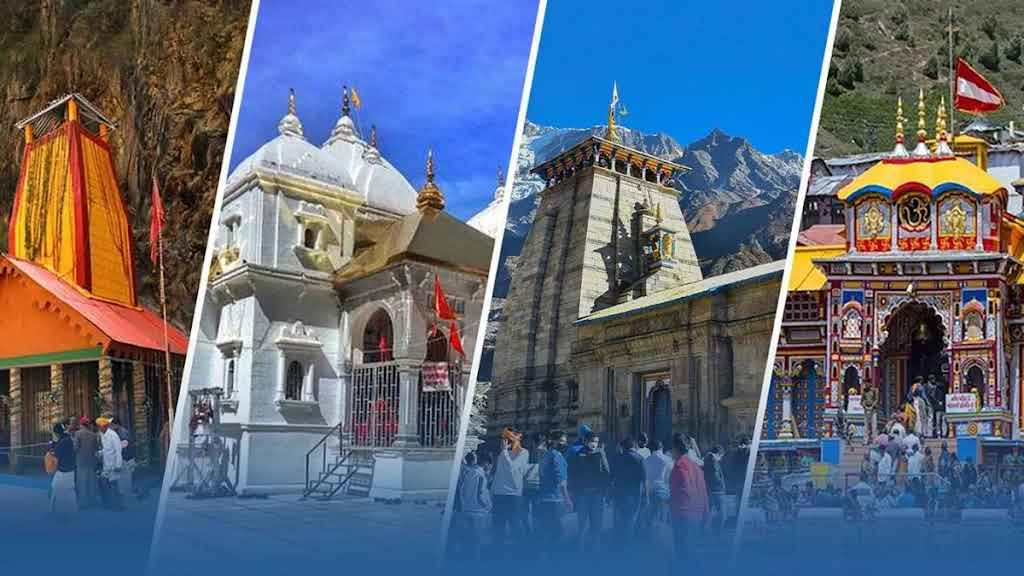Embarking on the Chardham Yatra By Road is considered one of the most spiritual and fulfilling journeys for devotees in India. The four holy shrines — Yamunotri, Gangotri, Kedarnath, and Badrinath — are located in Uttarakhand amidst the majestic Himalayas. Pilgrims believe that completing the Chardham Yatra helps attain spiritual peace and liberation.
While many travellers today prefer to complete the Chardham Yatra by Helicopter for time and comfort, the Chardham Yatra By Road remains the most traditional and immersive way to experience the divine energy of these shrines. Over 9 nights and 10 days, devotees travel by road through scenic valleys, rivers, and snow-clad peaks, making memories that last a lifetime.
1. Yamunotri Temple — The Source of the Holy Yamuna
The journey of Chardham Yatra By Road usually begins with a visit to Yamunotri Temple, dedicated to Goddess Yamuna. Nestled at an altitude of around 3,293 metres, the temple is surrounded by breathtaking landscapes of the Garhwal Himalayas. Devotees trek from Janki Chatti to reach the temple, offering prayers and taking blessings from the goddess.
For history lovers and pilgrims alike, the Yamunotri Temple History is fascinating. The temple was originally built in the 19th century by Maharani Guleria of Jaipur and has since been reconstructed after natural calamities. Pilgrims also visit the hot springs of Surya Kund here, where they cook rice tied in a cloth and offer it to the deity as prasad.
2. Gangotri Temple — Abode of Goddess Ganga
The next destination on the Chardham Yatra By Road is Gangotri Temple, the revered shrine of Goddess Ganga. Situated at an altitude of 3,100 metres, the temple marks the origin of the holy River Ganga. Thousands of devotees come here every year to purify their souls by taking a dip in the Bhagirathi River.
According to mythology, King Bhagirath performed penance to bring the River Ganga down to earth to cleanse the souls of his ancestors. A visit to this temple is not only spiritually uplifting but also a chance to witness the beauty of the snow-covered peaks and dense pine forests.
Pilgrims often search for routes like How to Reach Gangotri from Rishikesh, which serves as the starting point for many road travellers. The road trip from Rishikesh to Gangotri is an experience in itself, passing through Uttarkashi, Tehri, and scenic mountain terrains.
3. Kedarnath Temple — The Sacred Jyotirlinga
The third destination of the Chardham Yatra By Road is the iconic Kedarnath Temple, dedicated to Lord Shiva. It is one of the twelve Jyotirlingas of India and is located at an altitude of 3,583 metres near the Mandakini River. The temple’s backdrop, with snow-capped peaks of the Kedarnath range, is awe-inspiring.
The temple is believed to have been established by the Pandavas during the Mahabharata era. Later, Adi Shankaracharya revived it in the 8th century. Pilgrims consider visiting Kedarnath an important part of their spiritual journey.
To learn more about the temple’s deep cultural roots, devotees can explore Kedarnath Temple History. The trek to Kedarnath from Gaurikund is around 16 km, making it a challenging yet rewarding part of the Chardham Yatra By Road.
For those with limited time or physical constraints, How Many Days Are Required for Char Dham Yatra by Helicopter becomes an important question. Helicopter services provide a convenient way to cover all shrines in just a few days, making darshan easier for elderly and time-bound devotees. You can also Book your Dehradun to Kedarnath helicopter for quick darshan
4. Badrinath Temple — Abode of Lord Vishnu
The final leg of the Chardham Yatra By Road leads to the famous Badrinath Temple, dedicated to Lord Vishnu. Located at an altitude of 3,133 metres on the banks of the Alaknanda River, the temple is one of the most significant Vaishnavite shrines in the country.
The colourful facade of the temple and its surrounding Himalayan peaks create a divine atmosphere. According to legends, Lord Vishnu meditated here, and Goddess Lakshmi stood by him as a tree to provide shade. Pilgrims from across the world come here to seek blessings of the presiding deity, Lord Badri Narayan.
Travellers often plan their routes in advance, searching for How to Reach Badrinath, which is well-connected by road from Rishikesh, Haridwar, and Dehradun.
Spiritual Importance of Chardham
The four shrines together represent different spiritual values and elements of life. Yamunotri stands for purity, Gangotri represents devotion, Kedarnath reflects power and strength, while Badrinath symbolises knowledge and compassion. To dive deeper into the essence of this sacred journey, pilgrims often explore Chardham Yatra Places and Their Spiritual Importance.
Chardham Yatra By Road vs Chardham Yatra By Helicopter
Choosing between Chardham Yatra By Road and Chardham Yatra by Helicopter depends on your time, health, and preferences.
- By Road: A 9 to 10 days journey that allows you to experience the beauty of Uttarakhand’s landscapes, interact with local culture, and follow the traditional route of the yatra.
- By Helicopter: A faster alternative, usually completed in 4 to 5 days, offering convenience, especially for elderly devotees and those short on time.
Both options are offered by Chardham Helicopters, ensuring comfort, safety, and spiritual fulfilment.
Conclusion
The Chardham Yatra By Road is more than just a pilgrimage. It is a journey of faith, devotion, and discovery through the majestic Himalayas. Whether you begin your spiritual quest from Yamunotri, purify your soul at Gangotri, bow to Lord Shiva at Kedarnath, or seek the blessings of Lord Vishnu at Badrinath, every step of the yatra enriches your spiritual experience.
And if you wish to complete the journey in comfort and less time, Chardham Helicopters also offers exclusive helicopter packages. Whichever path you choose, the Chardham Yatra remains an unforgettable journey of a lifetime.





Comments